Previously, I’ve waxed lyrical about the Zeiss Super Ikonta 532/16 – a top of the line, pre-war German camera. As well as the super-sophisticated, super-heavy Super Ikonta series, Zeiss also produced simpler cameras with the same lenses and shutters but no coupled rangefinder. These were the Ikontas. Then there was a still cheaper range, often using the same body frames, but with more basic shutters and lenses. These were the Nettars, and they were aimed firmly at amateurs. This is a review of the Nettar 515/2.
What’s in a Nettar?
I’ve used a little post-war 6×6 Nettar in the past and have been pleasantly surprised at the quality of the camera. More recently I’ve acquired a Nettar 515/2, a model from the early 1930s.
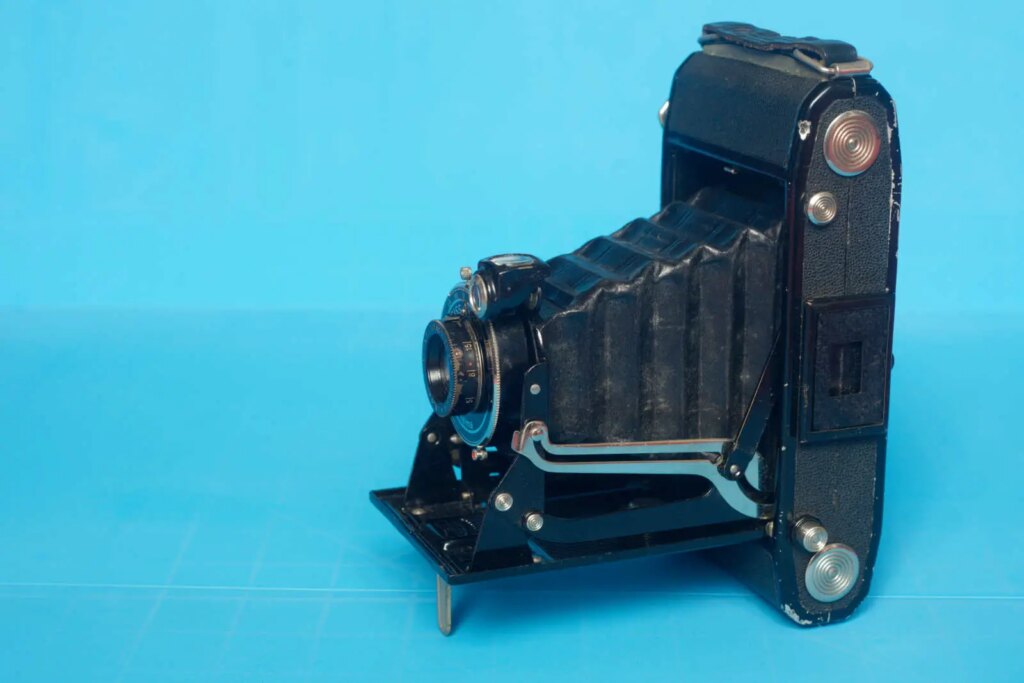
It makes an interesting comparison with the higher spec cameras. This camera takes standard 120 film, producing 8 6×9 shots from a roll. Other Nettar models produced 6×6 or 6×4.5 negatives. 6×9 was popular back in the day because a contact print was a reasonable size. Negatives are impressively large and contain a fair amount of detail.
Specification
The Nettar 515/2 film advance is via a key on the base/side of the camera. Wind-on is judged manually using the red window in the camera back which has a thin metal slider to cover it between times.
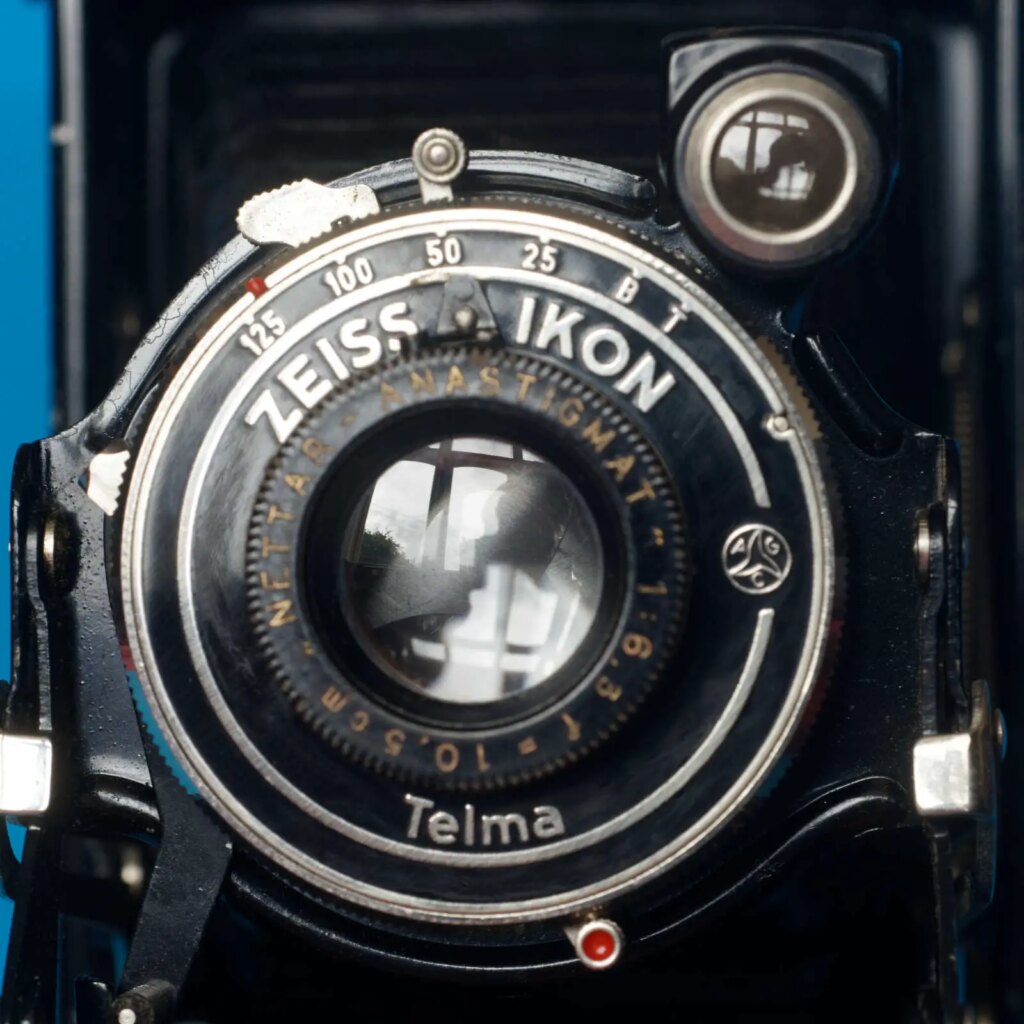
The shutter is a Telma with speeds from 1/125 to 1/25 plus B and T.
The lens is a 10.5 cm Nettar-Anastigmat with a modest f/6.3 maximum aperture. It is a simple triplet design, but is supposed to perform very well at around f/8. It has a nine-bladed diaphragm that stops it down as far as f/22.
The Nettar 515/2 gives you a choice of viewfinder. For waist-level shooting there is a tiny prismatic finder attached to the front standard. The finder has cut-outs to show the approximate field of view for portrait and landscape shots. It rotates to suit either aspect.
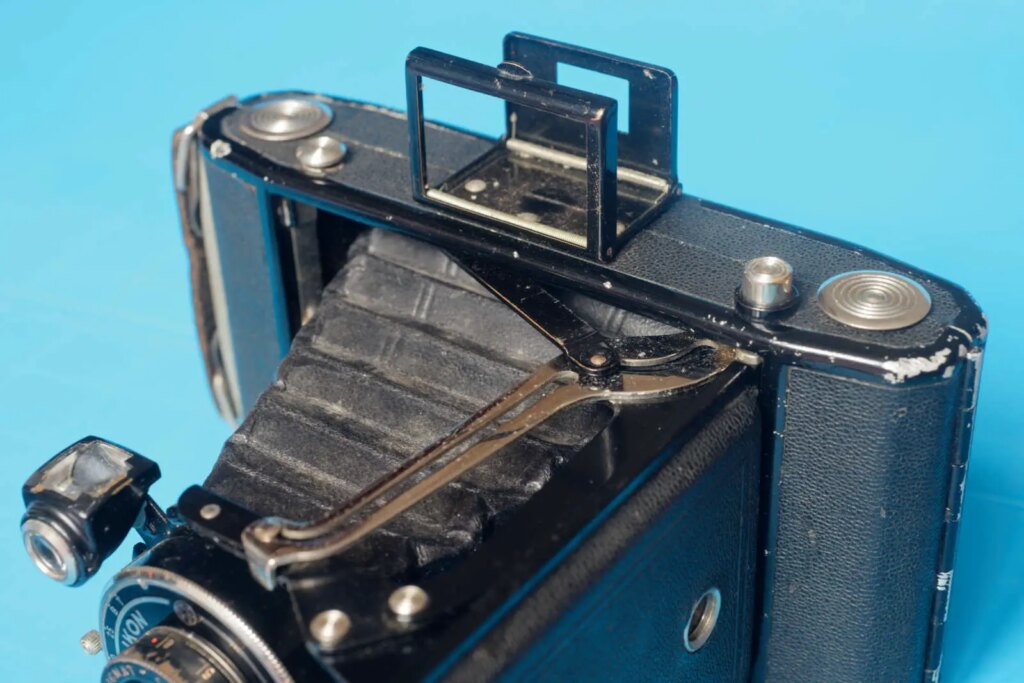
The second option is a direct view sports finder. The sports finder folds out in two parts from the side/top of the camera. It is spring-loaded and contains no optics. As such, it gives a clear, uninterrupted full-sized view.
Unsophisticated?
The Nettar 515/2 is a camera with a relatively slow but quite good lens and a shutter with a limited range of speeds.
Other economies come from simplification. No rangefinder, manually set focus, simple viewfinder, simple frame counter, no double exposure prevention, manual shutter cocking, not a hint of metering.
What you do get is:
- A shutter release on the camera body
- Two tripod mounts
- A ‘stand’ on the front door
- A release button for the drop-down front door
- A front standard and leather bellows which extend on a solid frame (A similar body and struts were also used by higher spec cameras such as the Ikonta 520/2)
Standing the test of time
The general feeling is of a well-made instrument. It is 90 years old and seems to have held up very well.
The rollers guiding the film over the gate are still shiny and free-running and the pressure plate is pleasingly smooth and well sprung. The rear door catch on my copy has dulled but is still functional. The film door itself features large wraparounds that should guard against light leaks. The springs that hold the spools in place also seem in good order.
There is no trace of a serial number on the body or on the lens. Earlier models apparently had a serial number inside the camera near the sports finder, but I couldn’t find one.
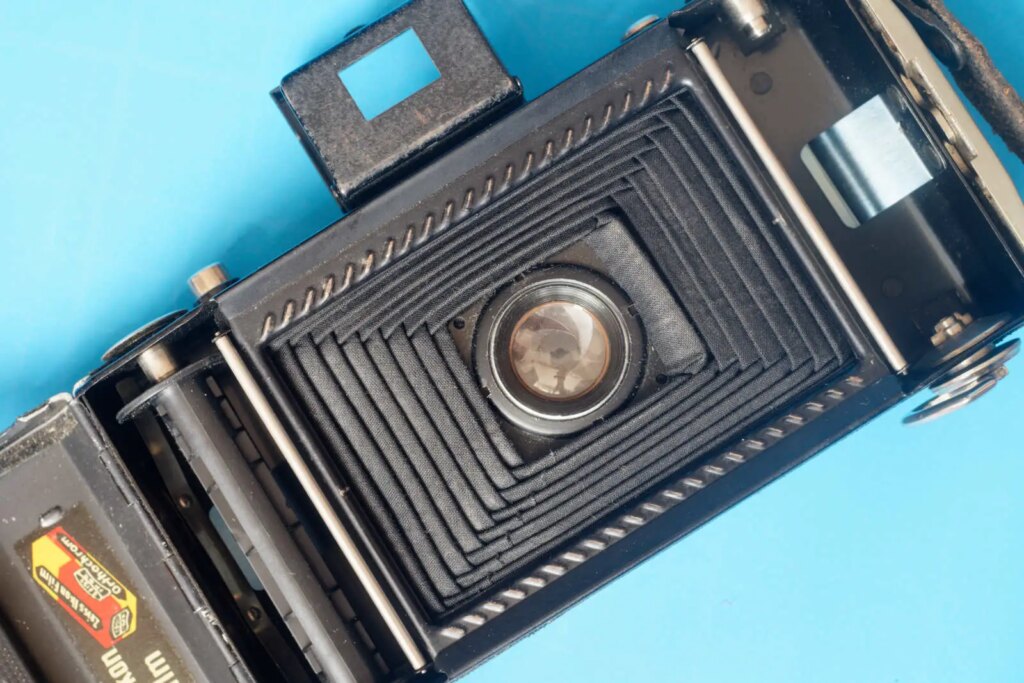
The only thing that looks a bit ‘klunky’ inside the camera are the guides that the pressure plate pushes the film onto over the film gate. These are a series of diagonal bumps, rather than a polished strip, but I believe there is a reason for this.
Because of size of the bellows and negative, 6×9 cameras run the risk of the film being sucked into the bellows as they open if this is done too quickly. The profile of the guides on the Nettar 515/2 should allow air to pass into the bellows without creating a huge suction effect.
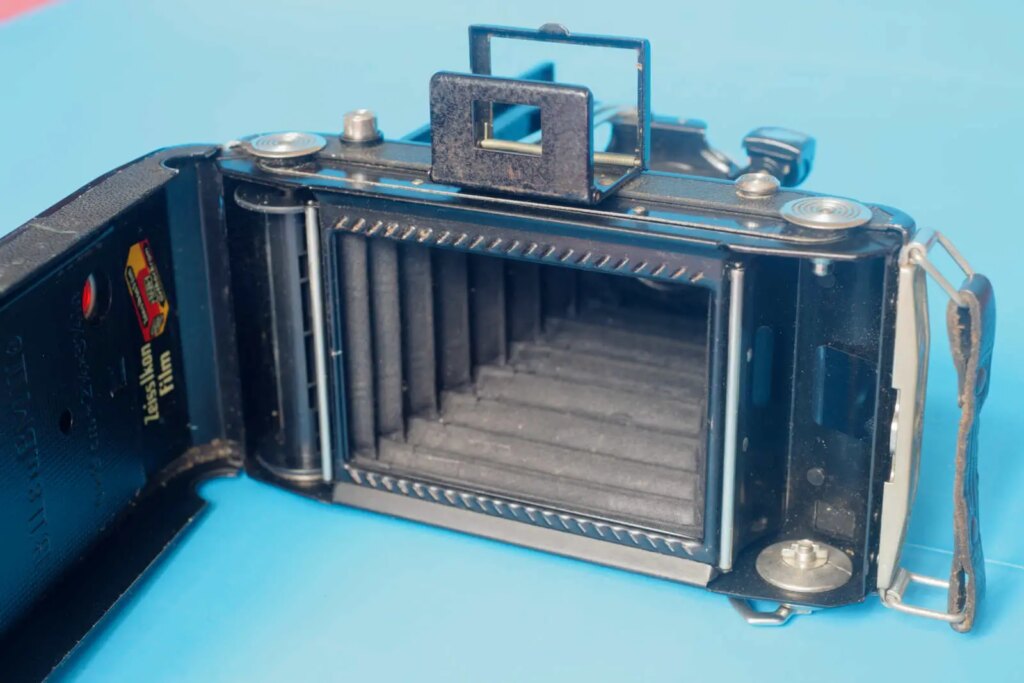
In use
The manual nature of wind-on and shutter cocking of the Nettar 515/2 requires a level of self-discipline. I nearly managed it, but still ended up with one blank frame, although I did avoid any unintentional double exposures.
I tried both viewfinders. The tiny waist level viewfinder was surprisingly useful and accurate for framing, but my favourite was the flip-out sports finder.
The Nettar 515/2 is really laid out to be used in portrait orientation. The lens settings are best seen in portrait mode. The waist-level prism finder tends to block your view of the lens settings when the camera is held in landscape orientation. In either orientation you operate the shutter release with your left hand.
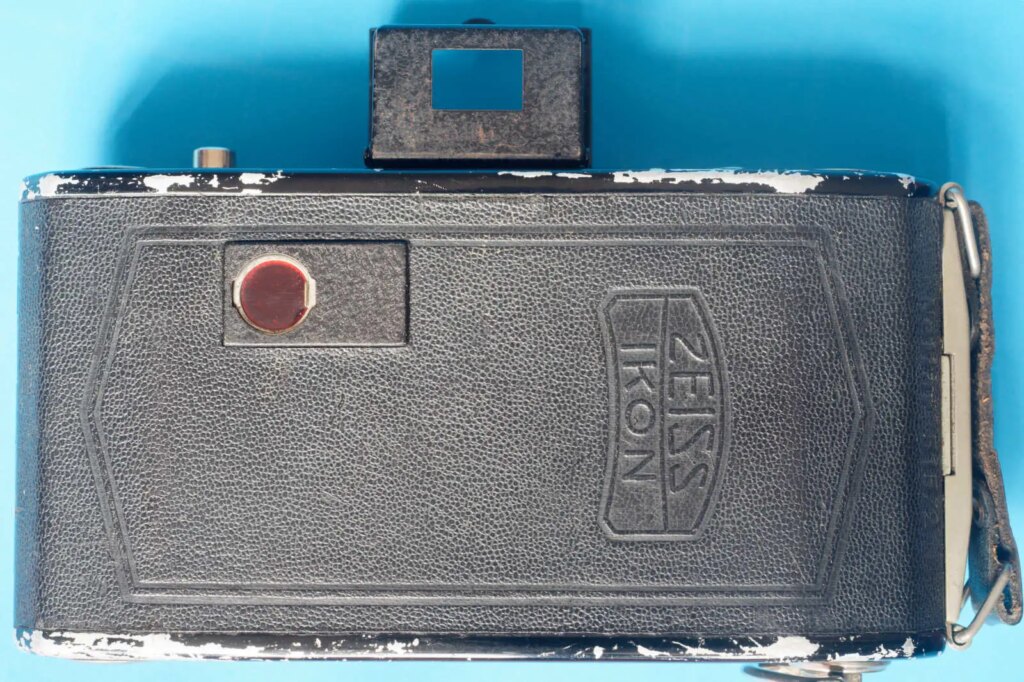
Because of the left-to-right/bottom-to-top film travel the red window is on the left/top of the back, with the numbers being upside-down when viewed in landscape orientation. The left-to-right travel does mean that frame numbers and other information are the right way up for landscape shots if you like to include borders in your digitizations.
Pictures
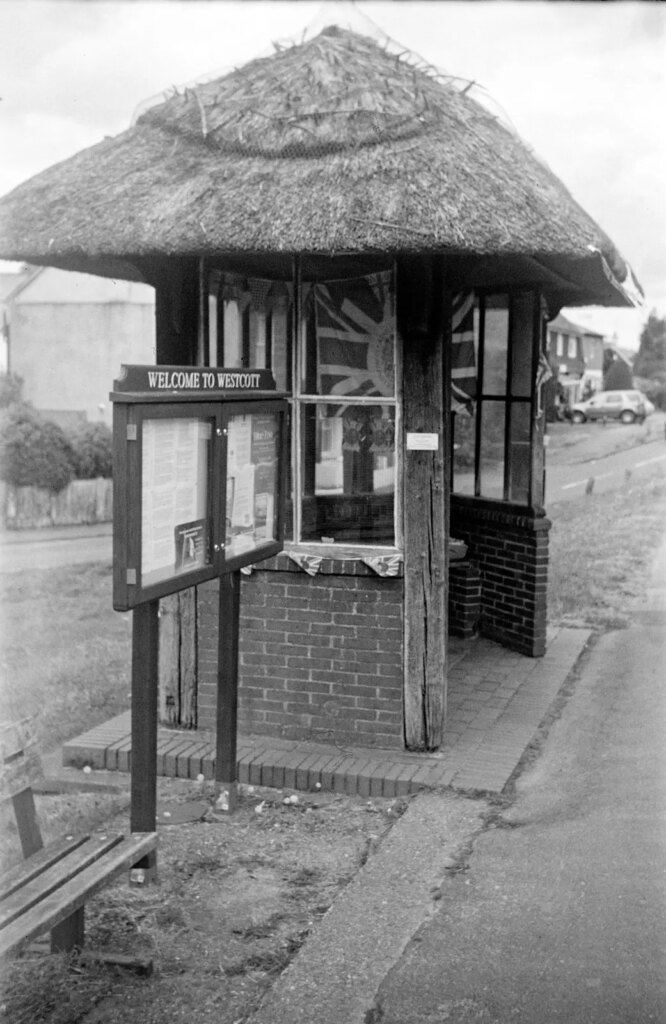
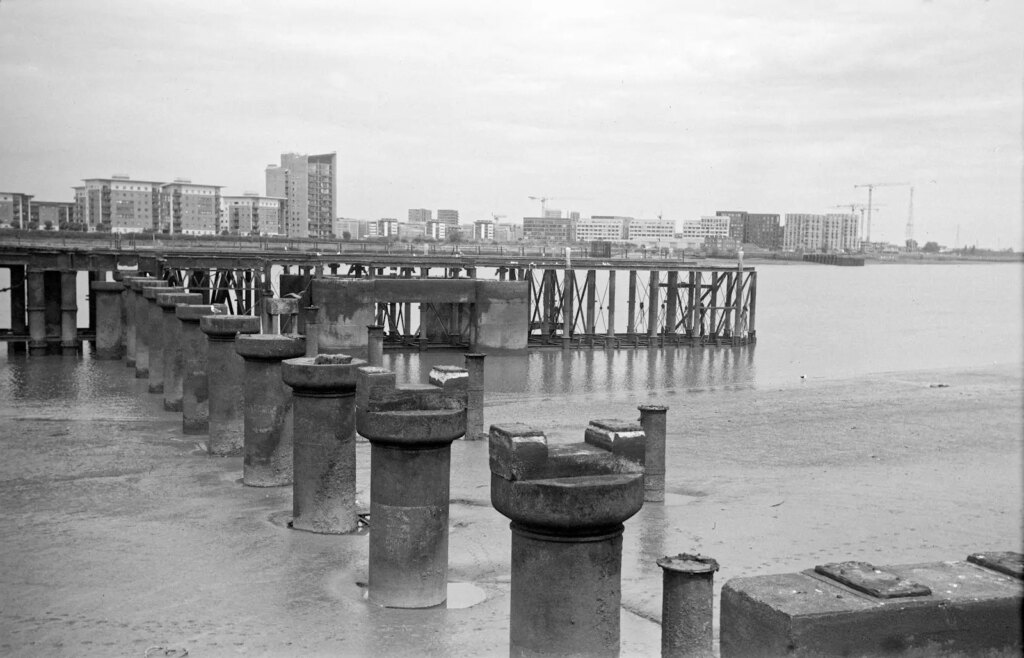
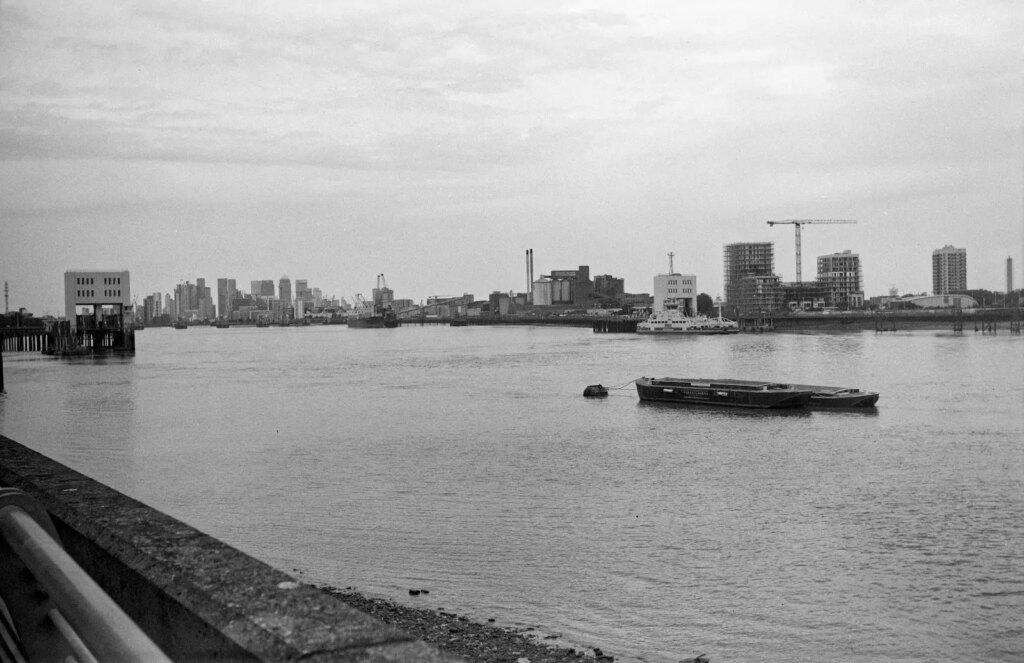
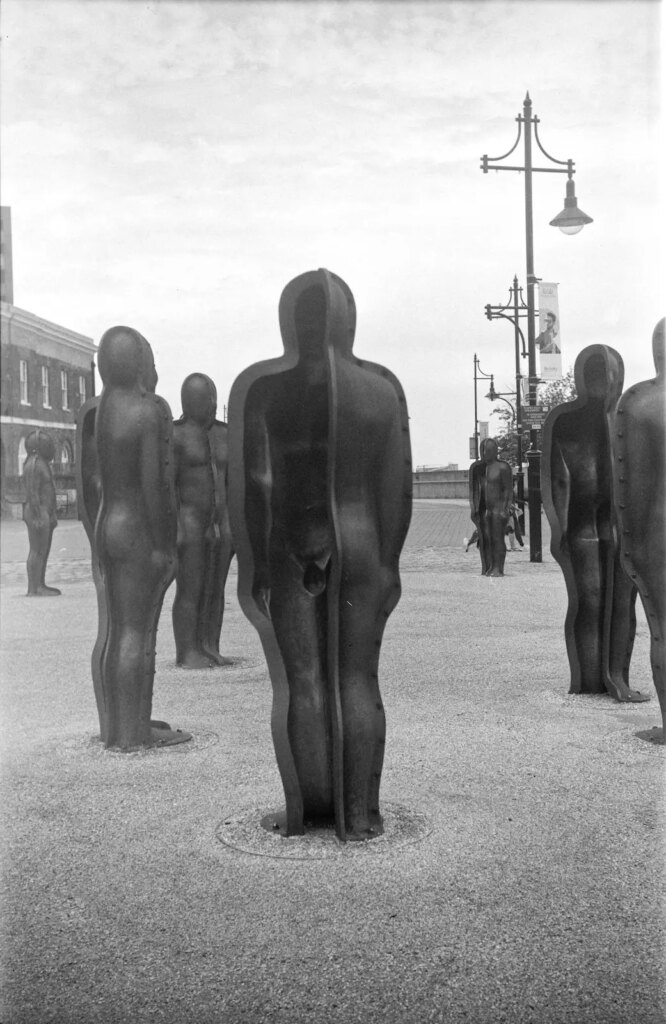
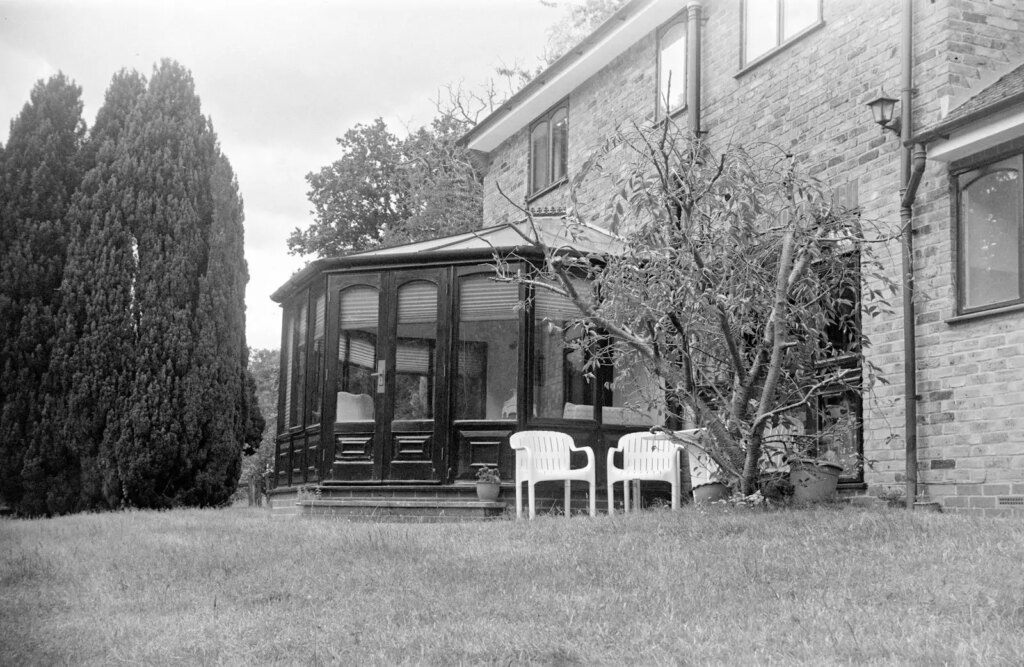
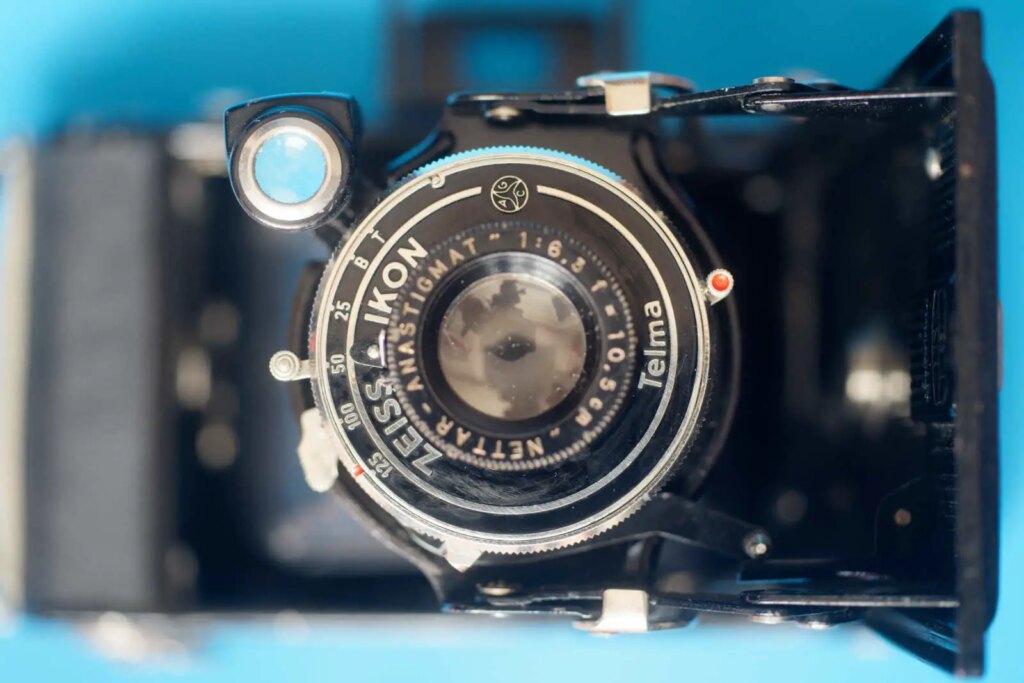
Conclusion
Zeiss used the Nettar line to offer an affordable camera with a modest speed lens in combination with a shutter with a limited (but useful) range of speeds in a quality, but relatively unsophisticated, body. You might not be able to use a Nettar 515/2 with its f/6.3 lens and 1/25-1/125 shutter in as wide a set of circumstances as a Super Ikonta with its f/2.8 lens and 1 second to 1/400 shutter, but with discipline in winding on, setting the shutter, setting focus and composing carefully you could still produce a quality result. The Nettar also has the advantage (in the case of the 515/2 compared to the 532/16) that it is nearly 400g lighter and offers a negative half as large again.
Share this post:
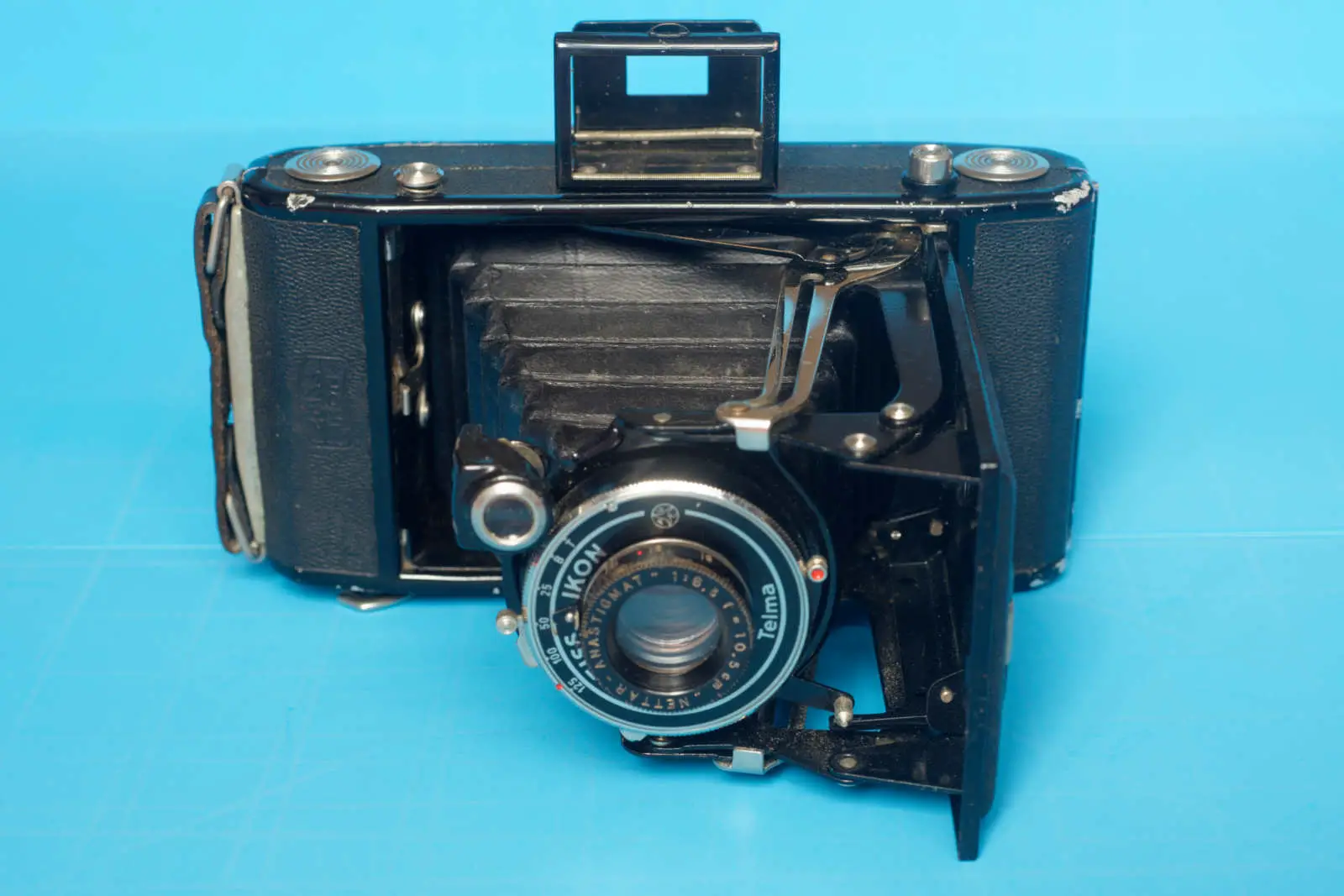








Comments
Alex G. on Zeiss Ikon Nettar 515/2 – A More Affordable Zeiss Camera
Comment posted: 21/08/2023
Jay Dann Walker on Zeiss Ikon Nettar 515/2 – A More Affordable Zeiss Camera
Comment posted: 22/08/2023
Mine is a circa 1950 6x6 Nettar with the sports (I believe this was once known as the 'albada') finder. Whoever bought it 73 years ago paid extra for the optional Synchro-Compur shutter, speeds 1-1/500. The Novar f/4.5/80mm lens is a useful compromise between the cheaper f/6.3 budget version and the more expensive range of 'glassier' (= more glass elements) lenses. The Novar is apparently a three-element lens but it was, I believe, made by Rodenstock, so it's no slouch in the quality department.
As I am not a film machine-gunner I find 12 negatives on a roll is quite satisfactory for a day's outing. If I feel really inspired I will probably use two rolls, which ups the cost by quite a lot but still ensures quality results - also no more endless hours post-processing my digital images on a laptop or a PC as I've had to do with my 'd' images. Keeping in mind that the size of a 120 negative, 6x6 or 6x9, is most likely close to 100 MP in 'd' terminology and quality of results, so again, it's a big win-win here for the folder.
What I enjoy most about my Nettar 6x6 kit is the portability. In its collapsed state, it easily fits into a coat pocket and with a lens hood, a UV or a light yellow filter over the lens, a Weston Master meter and a few rolls of film, it's easily carried on a bush trek or an architectural walk around Melbourne. The results are amazingly good, my negatives all show great mid-tones and even contrast and I find I can easily make up to 8x10" prints in my home darkroom tho' my standard print is 4.5x4.5" on a 5x8" (8x10 cut in two pieces) sheet of enlarging paper.
In the summing up, there is much to like about the Nettar, as the OP has written so well. I have to say my other 1950s folder, a slightly newer Voigtlander Perkeo I with the prized f/3.5/80mm Color Skopar lens, produces slightly better results in the mid-tones, but this isn't readily seen in a casual look at the finished prints from either camera.
Nettars vary in price on THAT web site, when they come available. Watch out for the el cheap offers as they are usually clapped out wrecks with pinholes in the bellows, tho' again this seems to have been more a Voigtlander problem than a Nettar one.
I would happily use either folder in preference to my heavier Rollei TLR kit, but nowadays the elephant in the room with all film cameras, at least in Australia, is the price of films. 120 films are hideously expensive and for the most part all my friends who used folders and other 120 cameras in the past have now shelved them in favor of the 'd' cameras. Sad but such is the reality of photography in Century 21. We live and we learn.
Many thanks, Bob, for yet another masterful article about a fine old camera.
DANN in Australia.
Comment posted: 22/08/2023
Lee on Zeiss Ikon Nettar 515/2 – A More Affordable Zeiss Camera
Comment posted: 24/08/2023